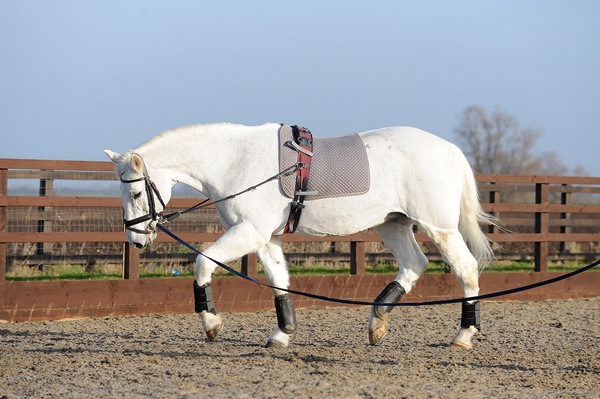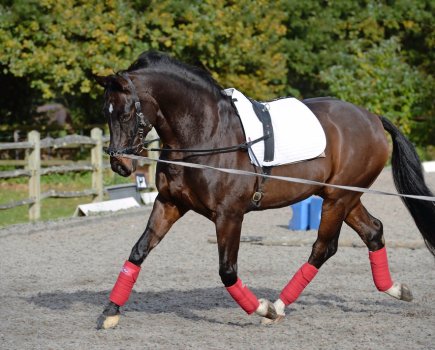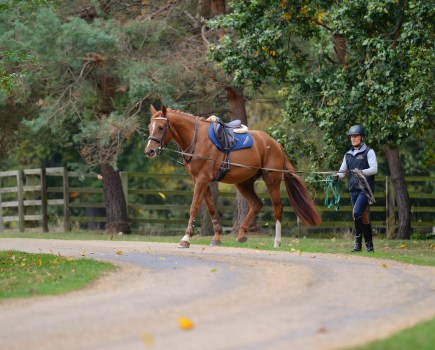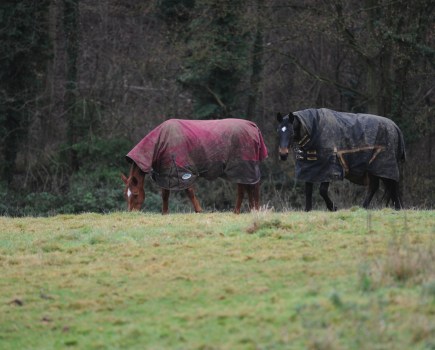A lungie bungie is a short strap with a central fixed ring is clipped at either end to the bit rings. Then an elasticated bungie cord, which can be adjusted to different lengths, is run through the central ring and attaches at either end to the D-rings of the saddle or a roller.

A lungie bungie provides an elastic contact on the bit.
WHEN SHOULD IT BE USED?
It can be used for lungeing or ridden work but not jumping.
HOW DOES IT WORK?
This provides an elastic contact on the bit, which is always kept even due to the bungie not being connected directly, but via the sliding ring. If the horse raises his head too far, pressure will be placed on the bit and thus the bars and corners of the mouth, until his head is lowered. However, due to the elastic and flexible nature of the bungie, the pressure is not a fixed pull, but is designed to ‘ask’ and encourage the horse to relax.
WHAT IS IT GOOD FOR?
– Developing lightness of contact
– Developing an even contact
– Improving suppleness through the jaw and poll and, therefore, the back
– Increasing suppleness of the back through a rounder outline
– Improving paces through suppleness
– Developing topline muscle
The bungie places gentle pressure on the corners and bars of the mouth via the bit to encourage an elastic contact. This helps develop softness through the jaw and poll, which allows the horse to use his back muscles and engage his quarters correctly. “It can help horses who have an uneven contact and one-sidedness by encouraging an even connection,” explains expert Tara Osborn. “It will also help improve lightness of contact due to its elasticity, especially for horses who are a little tight in the jaw or fixed on the contact.”
WHAT CAN GO WRONG?
Fitting the bungie too tightly will cause the horse to draw his nose too far in. “A horse who is overbent and behind the vertical will be put onto his forehand, which in turn will create tension in the back and make him reluctant to go forward,” says Tara. “However, if the aid is too slack it will have no effect and the horse will be long and above the bit, lacking connection and therefore unable to develop muscle.”








